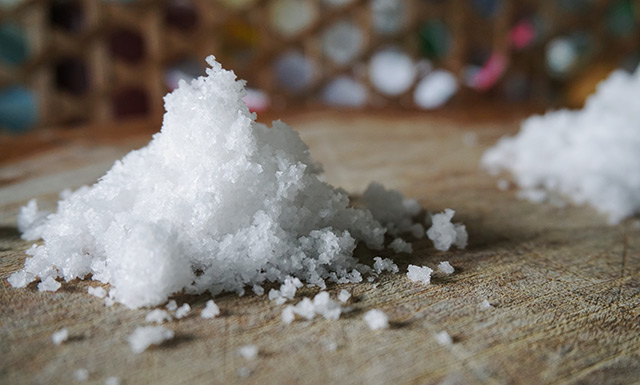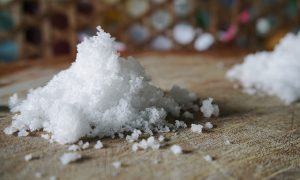
Perchlorate — toxicity, side effects, diseases and environmental impacts
Friday, November 17, 2017 by Rita Winters
http://www.naturalpedia.com/perchlorate-toxicity-side-effects-diseases-and-environmental-impacts.html

Perchlorates are salts that have no color and have no odor. In Chile, perchlorate naturally occurs in saltpeter (potassium nitrate, used to make fertilizers) deposits. These salts are very reactive, and is mostly used in fireworks, explosives, and rocket motors. A space shuttle’s booster rocket is made up of 70 percent ammonium perchlorate. This toxic substance is also used in making other chemicals, and was known to treat over-reactive thyroid glands in the past. Other names for this substance includes: Perchlorate anion, perchlorate ion, 14797-73-0, C494474, chlorine tetraoxide, CIO4-, tetraoxidechlorate(1-), tetraoxochlorate(VII), and VLANZX2P4.
This substance can be in crystalline form or powdered form. When exposed to heat or fire, it may explode. It is known to be a food contaminant, and must not be inhaled, ingested, or contacted. Vapors from the toxic chemical may cause severe burns, injury, and even death. Fires that result from ignition may produce toxic gases. Dilution in water causes pollution.

List of known side effects
Studies of perchlorate on rats at dosages larger than used in human beings show little evidence of toxicity. Side effects of perchlorate are classified into three groups: Minor, including incidences of drug rashes, drug fever, lymphadenopathy, and nausea; Agranulocytosis with severe cases of nephrotic syndrome; and aplastic anemia (low incidence).
It is also noted that perchlorate can cross the placenta of guinea pigs, and may possibly produce goiter in the fetus.
Body systems affected by perchlorate
Perchlorate can negatively affect the stomach and the intestines when ingested, and after digestion, can be absorbed into the bloodstream. Perchlorate toxicity in humans usually targets the thyroid glands, which highly affect the metabolism of the individual, especially among children.
Exposure to high doses of perchlorate decreases body weight, and affect gene expressions of the thyroid hormones. High doses of ammonium, sodium, potassium perchlorate causes eye, skin, and respiratory tract irritation, cough, vomiting, nausea, and diarrhea. It is also corrosive to the systems mentioned above.
Severe exposure can lead to vision loss and deep burns.
Items that contain perchlorate
Perchlorate is found almost everywhere. Outside, you can find it in drinking water, factories, hospitals, outdoor air, and rivers; in farms it exists in chemical storage tanks, landfills; in the town perchlorate can be in auto shops; at ports it can be found in shipping, storms and floods, and urban and industrial runoffs, in the US Southwest, it can be found in illegal dumps, and in burning trash.
How to avoid perchlorate
Perchlorate is present in most everything, including food, milk, and drinking water. However, perchlorate levels in common household food and items are significantly low, and will not put individuals at risk. If perchlorates are found near your location, it is highly suggested to drink only sealed bottled water to reduce the risks of toxicity. Maintain proper hygiene by washing hands frequently, and taking regular showers.
Where to learn more
- Perchlorate Chemicals Found in 100% of Tested Infant Formula Products
- Perchlorate chemicals in milk and produce found to cause thyroid deficiency
- U.S. Food and Water Supply Poisoned by Perchlorate
- Children exposed to the thyroid-harming chemical perchlorate in the womb have lower IQ scores
- Rocket fuel from military planes poisoning U.S. water supply
Summary
Perchlorate, in small doses, do not cause significant harm to humans. However, large doses and frequent exposure may lead to thyroid gland disorders, and cause burns and irritation in the skin and eyes.
Sources include:
Tagged Under: Tags: perchlorate





